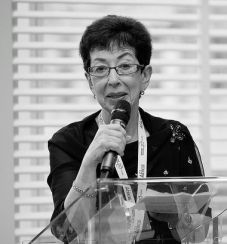Meet Nancy Hafkin, Internet Accessibility Pioneer
million dollar lady

From the late 1980s to 2000, Hafkin worked for the United Nations Economic Commission for Africa, a branch of the UN that focused on economic development in all countries of Africa. Working in Ethiopia, she realized that information wasn’t readily available to many Ethiopians — there wasn’t even a public library, let alone accessible Internet. She discovered that this problem was not limited to just one country in Africa, but impacted many people across the continent. To make matters worse, when Hafkin began to establish internet infrastructure by building e-mail nodes throughout Africa, she ran into “the handful of African telecommunications operators at the time [who] were used to exploiting quasi-monopolies, and they weren’t keen on people having other communication options.”
Backed by the UN, Hafkin fought to influence telecommunications policy — she got rid of Internet service provider monopolies, provided advisory services to governments, ended customs duties on computers, and helped lift prohibitions against importing modems. By the time she left her position at the UN, wired Internet was well established in many countries of Africa, and telecommunication trends were already shifting towards mobile phones.
Not content with her immense achievements with the Pan African Development Information System, after retiring from the UN, Hafkin decided to shift her work toward focusing on increasing internet access for women: “The rate of women connected to the Internet in Italy is as low as it is in Kurdistan, I’ve found that Internet use doesn’t correspond with the development of a country,” says Hafkin. Considering the growing use, and awareness of use, of internet based communication in protest, public dissent, and other political efforts, this is more alarming than simply not having enough women looking at lolcats. She characterizes the rates of women entering information technology fields as “terrifically low” and notes that compared to the rest of the developed world, American women are far less likely to study computer science or hold jobs in the field.
The answer? Tailoring the computer experience to fit women’s needs: She calls upon people already in the computer science field to find ways “to make more computer labs accessible to women, [to gear] education about the Internet toward women, or [to simply do] a better job of promoting the use of information technology among women.” It’s a task that sounds easy on paper but has proved to be very difficult, and with any luck more and more women will enter the tech world, revolutionizing telecommunications as we know it.
(via Wired.)
Have a tip we should know? tips@themarysue.com